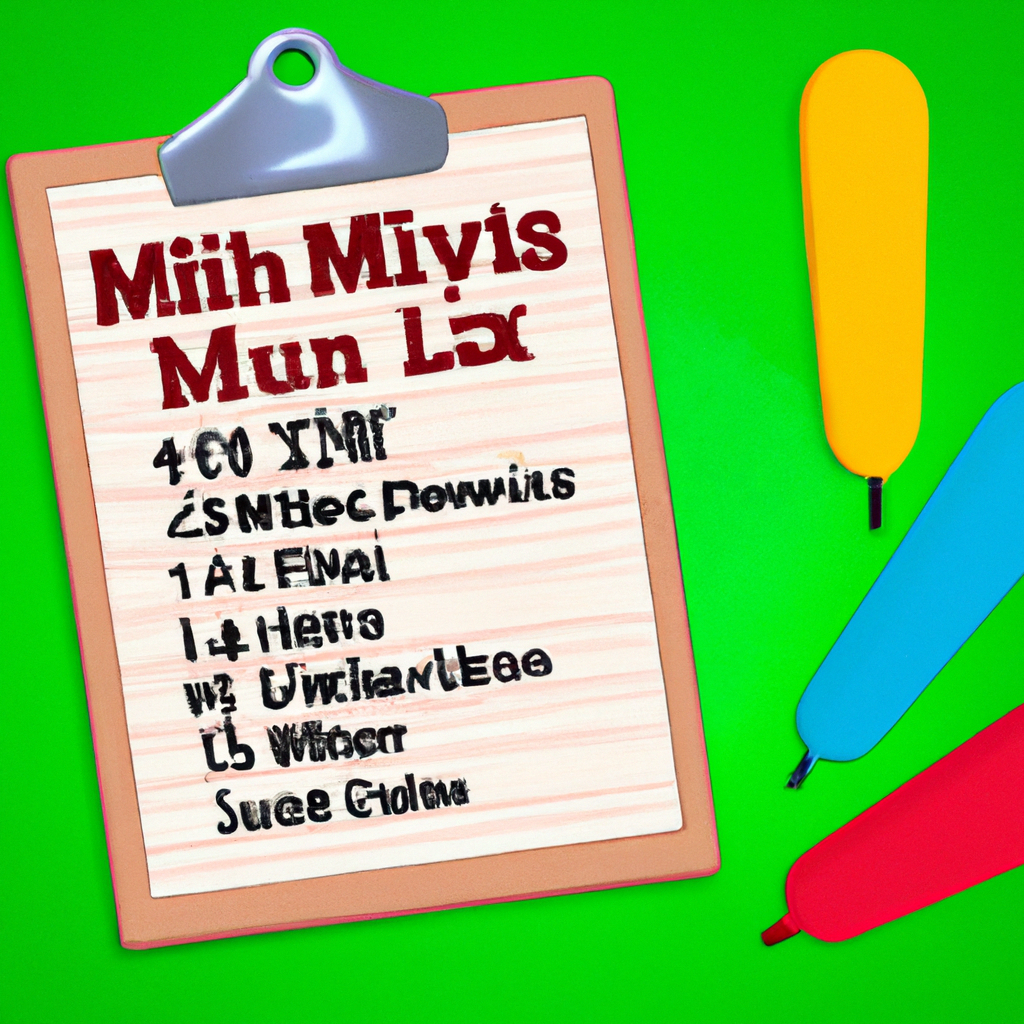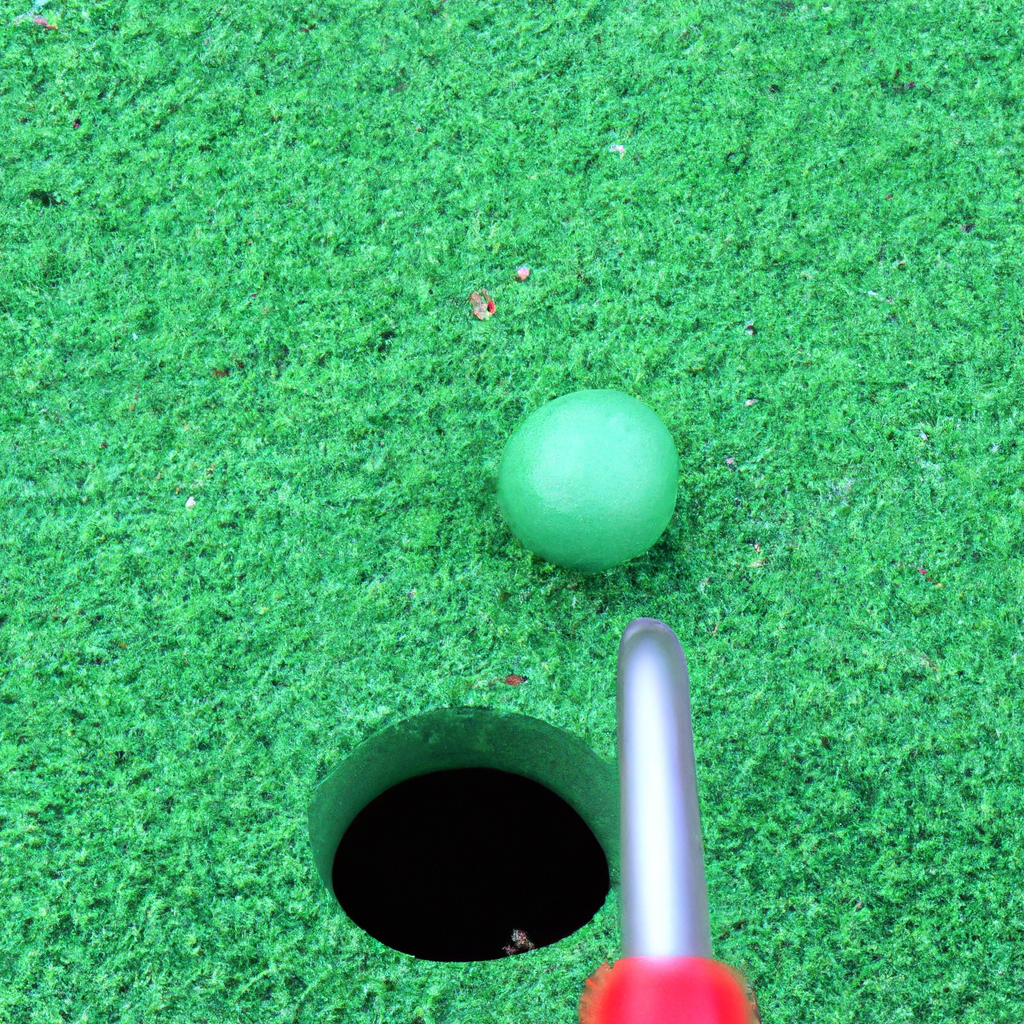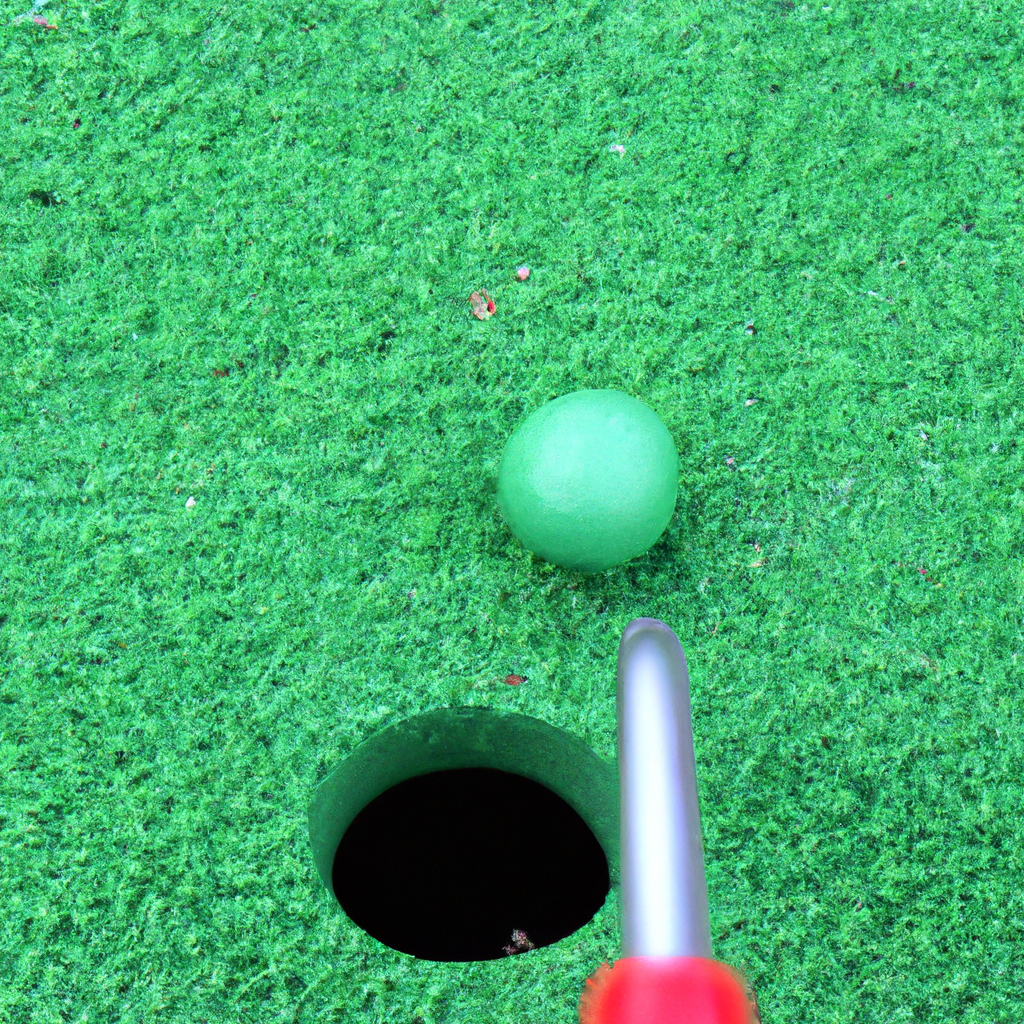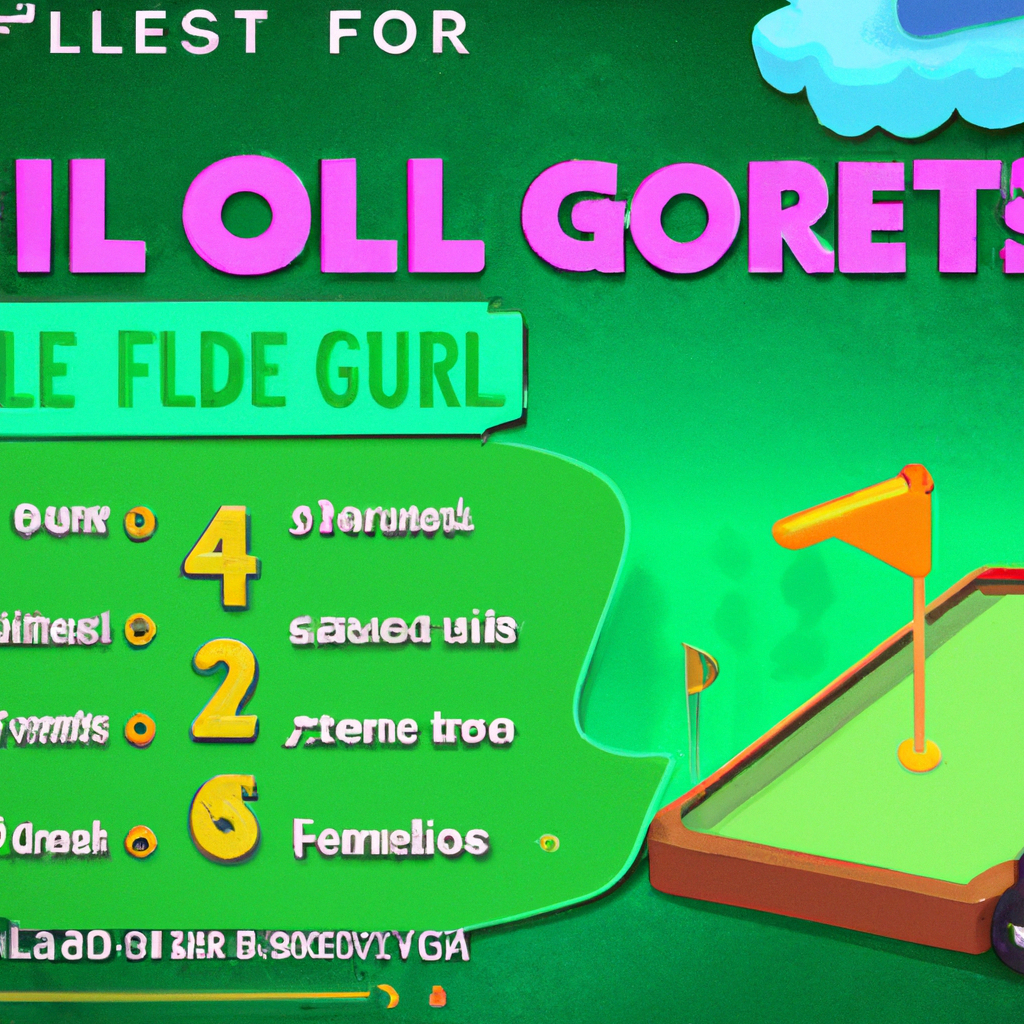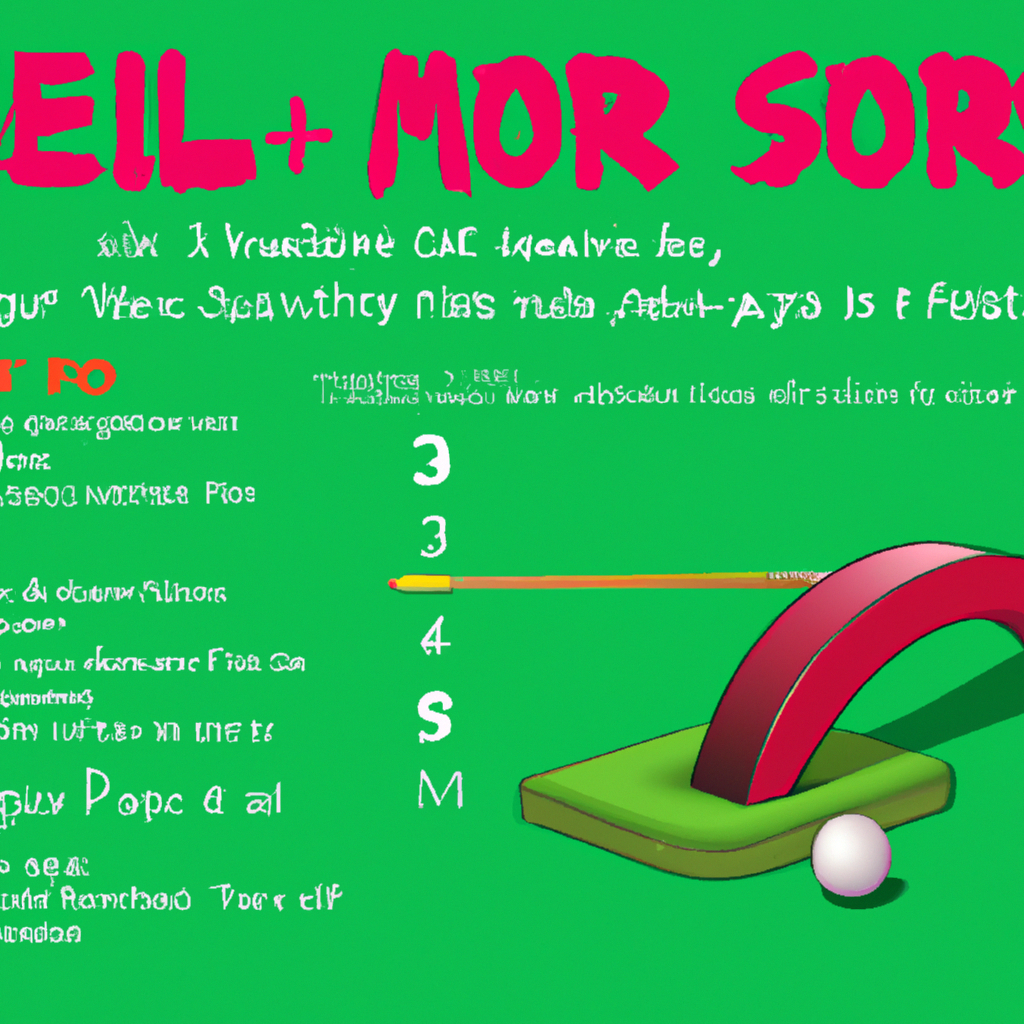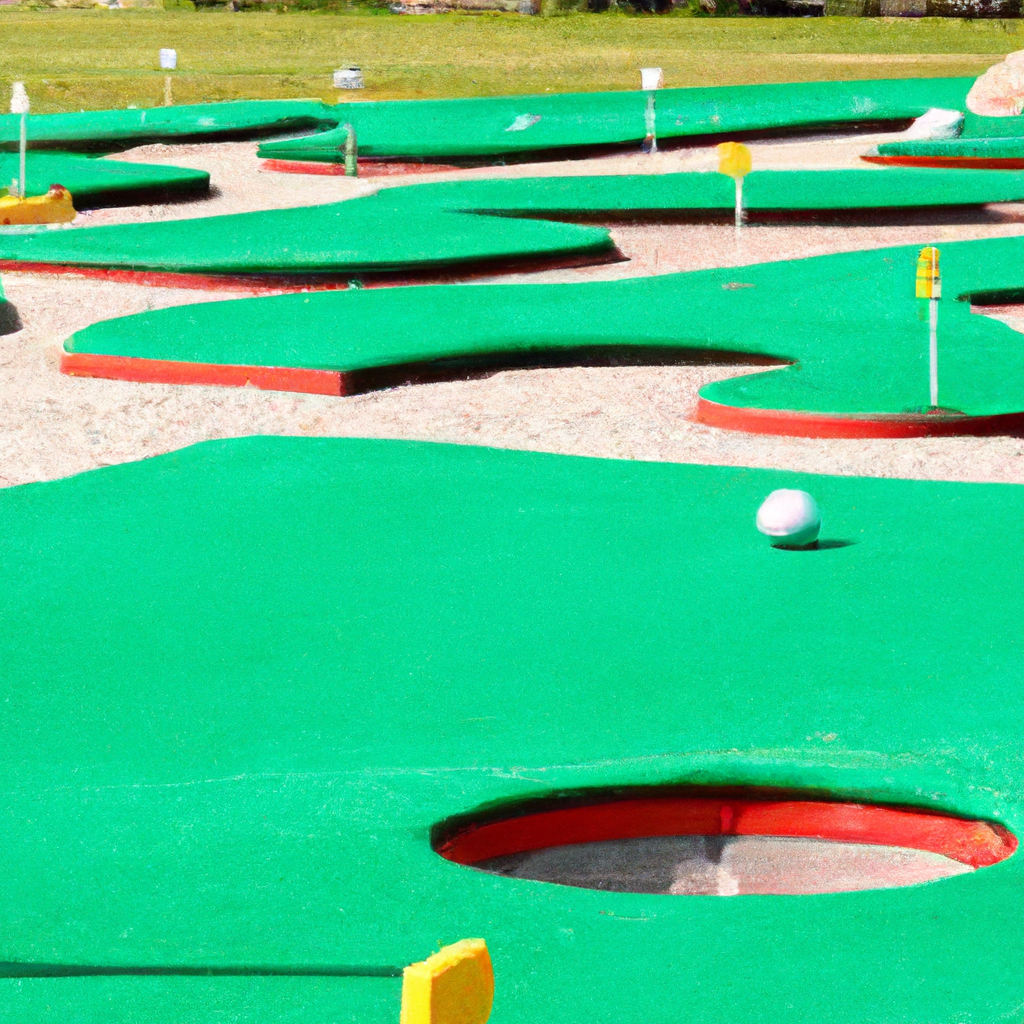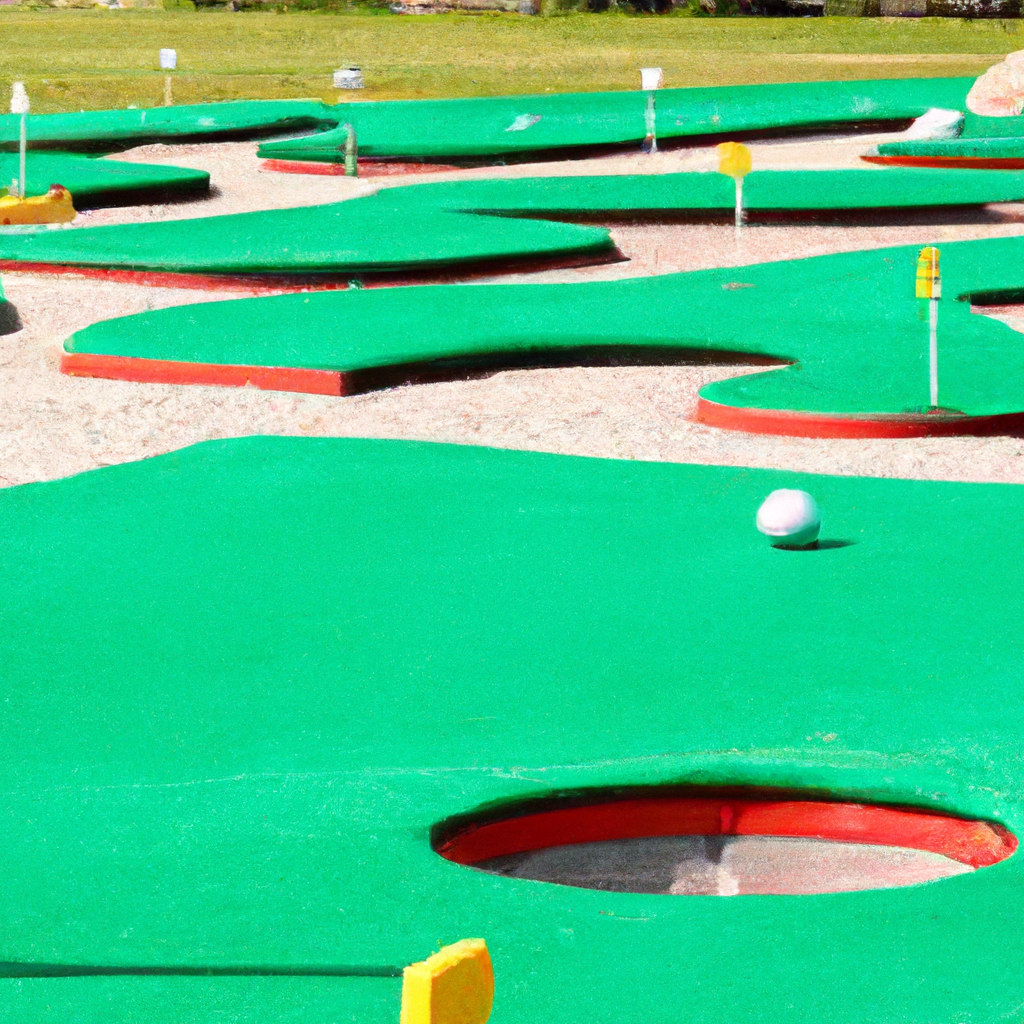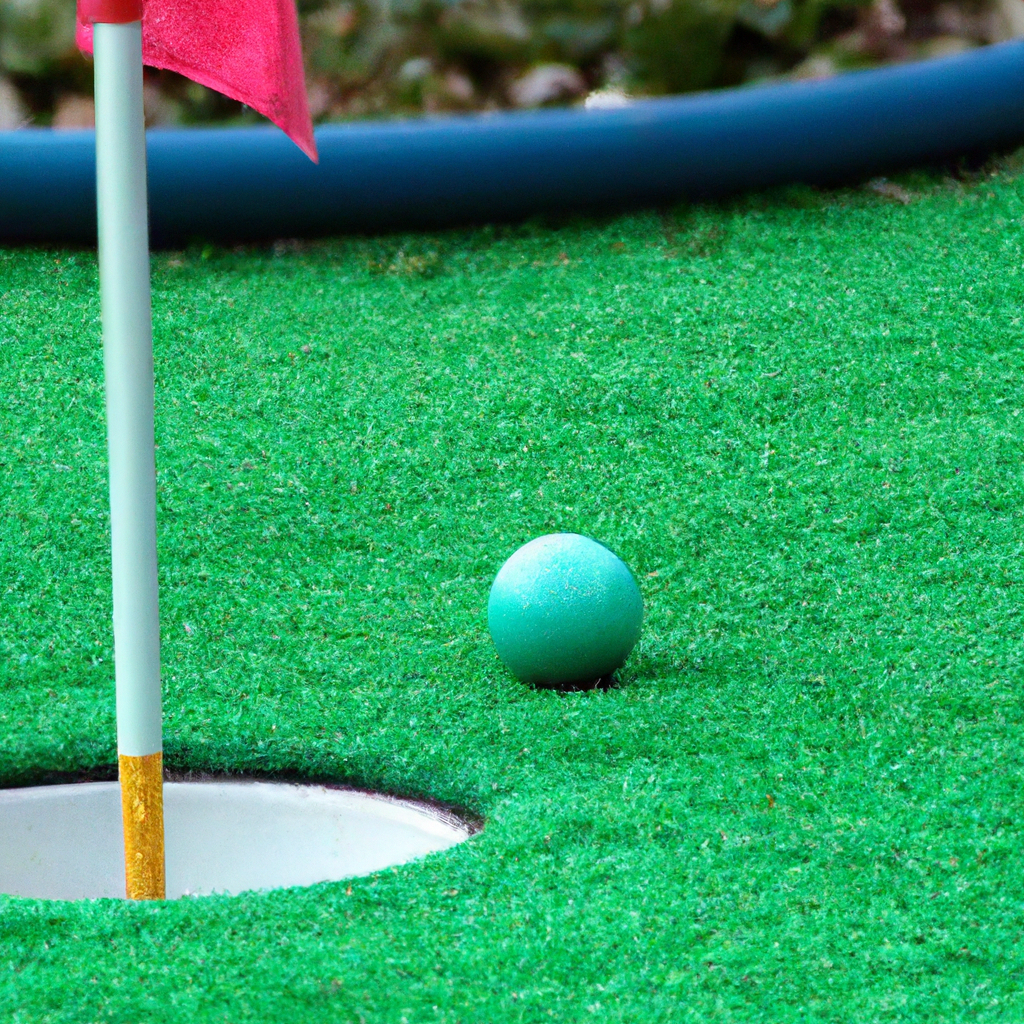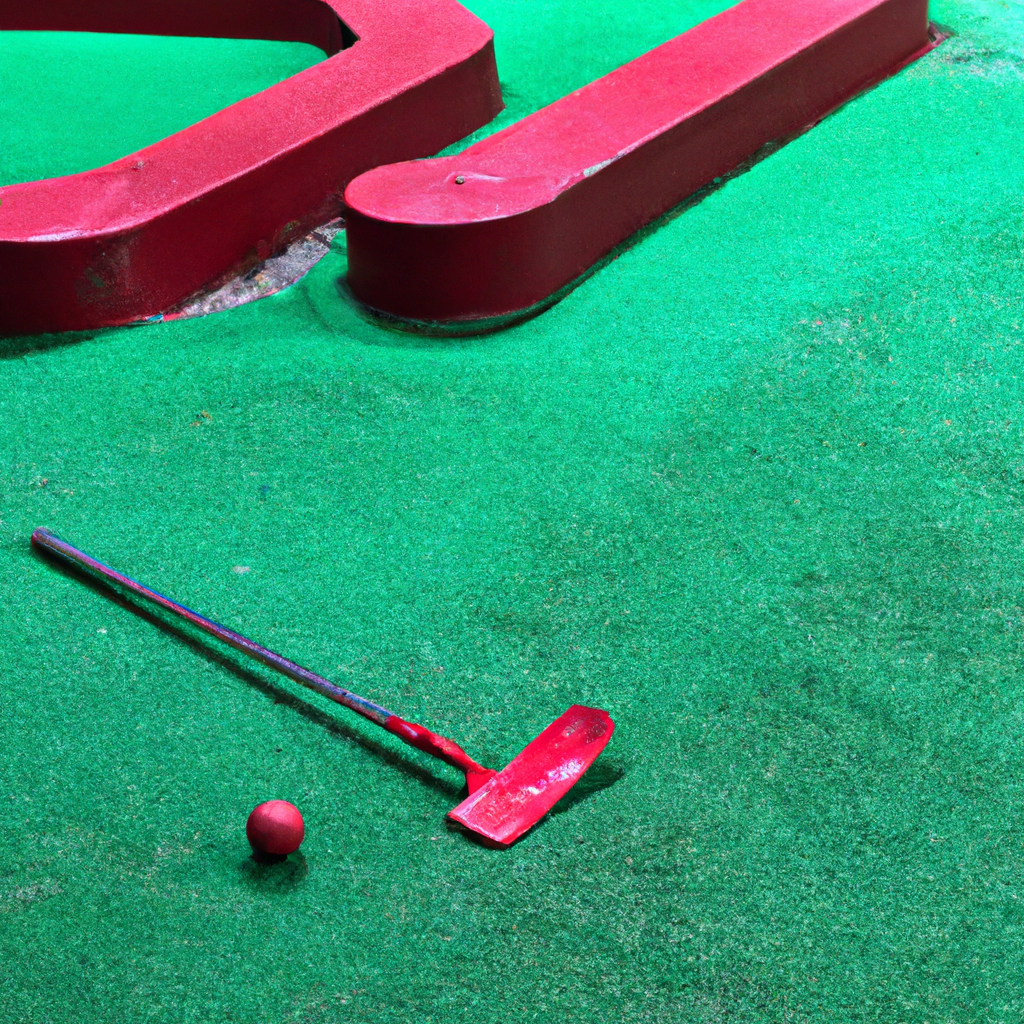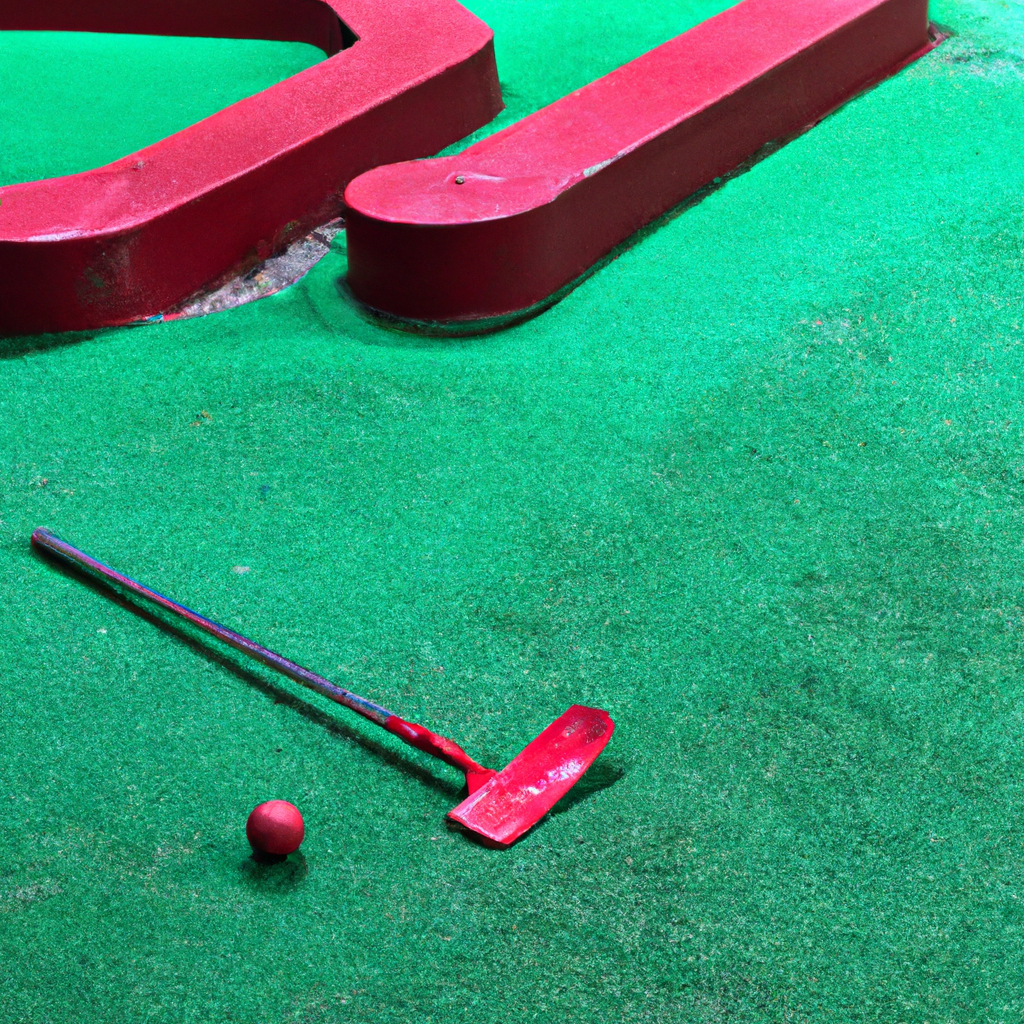So, you’ve decided to take on the world of mini golf, but there’s just one small problem – you’re not exactly sure how to keep score. Don’t worry, my friend, because this beginner’s guide has got your back. In this article, we’ll break down the simple yet sometimes confusing process of keeping score in mini golf, ensuring that you never lose track of your golfing prowess again. From understanding stroke limits to mastering the art of tallying up your points, we’ll equip you with the knowledge and confidence needed to conquer the mini golf course like a pro. So, grab your putter, aim for that hole-in-one, and let’s embark on this journey of scoring success together.

Understanding Mini Golf Scoring
Mini golf is a fun and popular recreational activity that can be enjoyed by people of all ages. Whether you’re playing with friends, family, or participating in a tournament, keeping score is an essential part of the game. Understanding the scoring system is crucial to determine the winner and track individual progress. In this article, we will explore the basics of mini golf scoring, the different types of scoring systems, and provide some helpful tips and etiquette for keeping score.
Scoring Basics
In mini golf, the objective is to complete each hole in the fewest number of strokes possible. The player who completes the course with the lowest score is declared the winner. Each hole has a designated par value, which represents the expected number of strokes a skilled player should take to complete the hole. The player’s score is determined by counting the number of strokes it takes to sink the ball into the hole.
Objective of Mini Golf
The objective of mini golf is to have fun while trying to complete each hole with as few strokes as possible. Mini golf courses are designed with various obstacles and challenges to test your skills and creativity. While the primary goal is to sink the ball into the hole, players must navigate around obstacles such as windmills, ramps, loops, and water hazards. The combination of strategic thinking and physical dexterity makes mini golf an exciting and engaging game for players of all levels.
The Importance of Keeping Score
Keeping score in mini golf serves several purposes. Firstly, it allows you to track your progress and improvement over time. By comparing your scores from different games, you can identify areas where you may need to focus on improving your skills. Secondly, scoring helps maintain a fair and competitive environment, especially in tournaments or matches. It allows players to compete against each other and determine the winner based on their performance. Finally, keeping score adds a sense of accountability and challenge to the game. It motivates players to strive for better scores and enhances the overall enjoyment of the game.
Understanding the Course and Obstacles
Different Types of Mini Golf Courses
There are various types of mini golf courses, each with its own unique layout and theme. Traditional courses typically feature green carpets and simple obstacles like hills, loops, or tunnels. Adventure-themed courses are designed to resemble realistic landscapes, such as forests, jungles, or mountains. These courses often incorporate elements like waterfalls, caves, and bridges, adding an element of excitement and immersion to the game. Theme-based courses, on the other hand, are designed to replicate famous landmarks, fictional worlds, or historical settings. These courses often have elaborate decorations and obstacles that align with the chosen theme.
Common Obstacles
Mini golf courses are known for their creative and challenging obstacles. Some common obstacles you may encounter include windmills, rotating platforms, tunnels, ramps, bridges, and water hazards. Each obstacle requires a different approach and skill set to overcome. Windmills, for example, require precise timing and control to navigate the moving blades. Water hazards, such as ponds or streams, require accuracy and finesse to avoid losing strokes by landing in the water. The variety of obstacles keeps the game interesting and provides opportunities to showcase your technique and problem-solving skills.
Understanding Hole Layouts
Each hole on a mini golf course has a unique layout that presents its own set of challenges. The layout may consist of varying distances, slopes, angles, and obstacles. Some holes are designed to be more straightforward, allowing players to score lower, while others are intentionally more difficult, requiring precise shots and careful planning. Understanding the hole layout is crucial in determining the optimal strategy to score well. By carefully observing the layout, you can plan your shots, anticipate potential obstacles, and navigate the course efficiently.

Equipment and Preparations
Choosing the Right Putter
The putter is the most crucial piece of equipment in mini golf. It is specifically designed for putting, with a flat face and a shorter length compared to regular golf putters. When choosing a putter, consider its weight, grip, and length. Pick a putter that feels comfortable in your hands and suits your playing style. Experimenting with different putter options can help you find the one that gives you the best control and accuracy.
Using Scorecards
Scorecards are essential tools for keeping score in mini golf. They provide a structured format to record the number of strokes taken on each hole. Scorecards typically have numbered boxes corresponding to each hole, allowing players to easily track their scores. Some scorecards may also include extra fields to record additional information, such as hole-by-hole performance or match details. Using a scorecard helps you stay organized and provides an accurate record of your performance.
Pencil and Clipboard
To effectively use a scorecard, you’ll need a pencil and a clipboard. The pencil allows you to easily mark down your scores and make adjustments as needed. It is important to use a pencil rather than a pen, as scores may need to be modified during the game. A clipboard serves as a hard writing surface, making it easier to write on the scorecard, especially if the course doesn’t provide proper tables or stands.
Mini Golf Scoring Systems
Traditional Stroke Play
In traditional stroke play, each player’s score is determined by the total number of strokes taken to complete the course. The player with the lowest overall score wins. Stroke play is suitable for individual games or tournaments, where players compete against each other independently. This scoring system emphasizes consistency and rewards players who consistently perform well on each hole.
Match Play
Match play is a scoring system where players compete head-to-head on each hole. The player who wins the most holes is declared the winner. Unlike stroke play, where the total strokes matter, match play focuses on the outcome of individual holes. Players can win, lose, or tie each hole, and the winner is determined by the number of holes won. Match play is suitable for competitive games between two or more players and adds a strategic and psychological element to the game.
Stableford Scoring
Stableford scoring is a points-based system that assigns a specific point value to different scores on each hole. The player’s score for the hole is determined by the number of points earned, rather than the number of strokes taken. The allocated points vary depending on the par value for the hole. Stableford scoring allows players to score positive points for a good performance and deduct points for poor performance. The player with the highest point total at the end of the round is the winner.
Golf Skins Game
The golf skins game is a popular scoring system where each hole is worth a specific amount of money, known as a “skin.” In this format, players compete individually, and the player who wins a hole outright by having the lowest score claims the skin and its monetary value. If multiple players tie for the lowest score on a hole, the skin and its value are carried over to the next hole. The player who wins the hole outright receives the total value of all the unclaimed skins. The golf skins game adds an element of excitement and risk-reward strategy to the game.
Basic Mini Golf Rules
Starting Order
Before beginning a round of mini golf, players must determine the starting order. This can be done through a mutual agreement, a random draw, or any other fair method. Once the starting order is established, players take turns teeing off, with the player farthest from the hole going first.
Out of Bounds
Mini golf courses often have designated out-of-bounds areas marked by a boundary line or a different colored carpet. If your ball lands out of bounds, you receive a penalty stroke, and your next shot must be taken from a designated penalty area or the previous spot where the ball was first hit.
Obstacle Interactions
When encountering obstacles, it’s essential to follow the specific course rules and regulations. In general, players should avoid touching or moving any obstacles with their hands or clubs, unless specifically allowed by the rules. If your ball gets stuck or lodged in an obstacle, you may be entitled to a free drop or a penalty stroke, depending on the course rules.
Ball Movement
In mini golf, once a player hits the ball, it must come to a complete stop before they take another shot. If the ball is still rolling, you are not allowed to hit it again. It’s important to be patient and wait for the ball to stop moving before proceeding with the next shot.
Recording Scores in Stroke Play
Assigning Par Values
In stroke play, each hole is assigned a par value, which represents the number of strokes an average player would take to complete the hole. Par values can range from two to six, depending on the course’s design and difficulty. The player’s objective is to complete each hole in as few strokes as possible, aiming to score under par for each hole.
Counting Strokes per Hole
To record scores in stroke play, count the number of strokes it takes you to sink the ball into each hole. Write down the number of strokes taken on the corresponding hole’s box on the scorecard. Keep track of your strokes carefully, ensuring accuracy throughout the game.
Calculating the Final Score
To calculate your final score in stroke play, simply add up the total number of strokes taken on all 18 holes. The player with the lowest total score is the winner. If multiple players tie for the lowest score, a playoff or tiebreaker may be used to determine the winner.
Understanding Under and Over Par
In stroke play, scoring under par is considered favorable, while scoring over par is less desirable. Each hole’s par value provides a benchmark for performance. A score of one stroke under par on a par 3 hole, for example, would be called a “birdie,” while scoring one stroke over par would be called a “bogey.” The terms “eagle” and “double eagle” refer to scores significantly under par, while “double bogey” and “triple bogey” refer to scores significantly over par. These terms add a layer of language and excitement to the scoring system.
Recording Scores in Match Play
Player vs. Player Format
In match play, players compete head-to-head on each hole. After each hole, the player who wins the hole is awarded a point, while the losing player receives no points. If both players score the same number of strokes, the hole is considered tied, and no points are awarded. The winner of the match is determined by the total number of holes won, rather than the total number of strokes taken.
Counting Hole Wins
To record scores in match play, keep track of the number of holes won by each player on the scorecard. Use a “+1” to indicate a hole won, a “0” for a tied hole, and leave the box blank for a lost hole. Update the scores after each completed hole, ensuring accuracy and transparency.
Determining Tiebreakers
In the event of a tie in match play, where both players have won an equal number of holes, additional holes, known as sudden-death or playoff holes, may be played to determine the winner. Sudden-death holes continue until a player wins a hole outright, eliminating the tied score and proclaiming a final winner.
Keeping Track of Match Scores
Throughout the match, it is important to keep both players and any spectators informed of the current scores. Communicate the current scores after each hole, either verbally or by constantly updating a visible scoreboard. This ensures transparency, fairness, and adds to the overall excitement of the match.
Recording Scores in Stableford Scoring
Assigning Point Values
In Stableford scoring, each hole is assigned a specific point value based on the player’s score relative to the par value. The allocated points vary depending on the course, but the most common point allocation is as follows: double bogey or worse (0 points), bogey (1 point), par (2 points), birdie (3 points), eagle (4 points), and double eagle or better (5 points). The objective is to score the highest number of points possible on each hole.
Counting Points per Hole
To record scores in Stableford scoring, count the number of points earned on each hole based on the player’s performance relative to par. Write down the point total in the corresponding hole’s box on the scorecard. Ensure accuracy when calculating the points, as the sum of these points determines the player’s Stableford score.
Totaling the Stableford Score
To calculate the player’s Stableford score, sum up the points earned on each hole throughout the round. The player with the highest Stableford score at the end of the round is declared the winner. Stableford scoring rewards consistency and allows players to recover from a poor performance on a single hole by doing well on subsequent holes.
Understanding the Handicap System
In Stableford scoring, it is common to utilize a handicap system to ensure fair competition among players of varying skill levels. A handicap is a numerical value that represents a player’s skill level, with higher handicaps indicating less skill. The handicap value is subtracted from the player’s total score to compensate for differences in skill, making the game more equitable and competitive.
Playing Golf Skins Game
How Skins Game Works
The golf skins game is a popular variation where players compete individually on each hole for a “skin.” A skin refers to the value assigned to each hole, typically a predetermined amount of money or points. Players accumulate skins by having the lowest score on each hole outright.
Scoring Skins on Each Hole
To score skins in the golf skins game, players must have the lowest score on a hole compared to all other players. If multiple players tie for the lowest score, the skin and its value carry over to the next hole, increasing the stakes for future holes. The player who wins a hole outright claims the skin’s value assigned to that hole.
Determining the Skin Winner
The winner of the skin on each hole is determined by having the lowest score. If no player wins the hole outright, the skin and its value are carried over to the next hole. This continues until a player wins a hole outright, at which point they claim the accumulated value of all unclaimed skins. The golf skins game adds a competitive and thrilling element to the game, as players have the opportunity to win a substantial prize on each hole.
Additional Scoring Tips and Etiquette
Avoid Distractions while Scoring
When scoring a round of mini golf, it is essential to focus and avoid distractions. Pay attention to each shot and record scores accurately. Minimize distractions such as mobile phones or conversations that may interfere with the scoring process. This ensures fairness and accuracy in keeping score.
Double-Checking Scores
To ensure accuracy, it is good practice to double-check the scores after each hole. This can be done by having another player or a scorekeeper verify the scores before moving on to the next hole. Double-checking scores minimizes errors and helps maintain a fair and transparent competition.
Keeping Score for Others
In mini golf, it is not uncommon for players to take turns keeping score for each other. If you are designated as the scorekeeper, take your responsibility seriously and record scores accurately. Be attentive and communicate scores clearly to avoid any confusion or disputes. Remember that scoring is an important part of the game and contributes to the overall enjoyment for all players involved.
Respecting Opponents
Lastly, it is crucial to respect your opponents when playing mini golf. Treat others with kindness and fairness, regardless of their skill level or performance. Avoid any unsportsmanlike behavior, such as gloating or mocking others’ scores. Encourage and support your fellow players, celebrating their successes and offering words of encouragement when they face challenges. Remember, mini golf is ultimately a game meant to be enjoyed with others, so always maintain a friendly and respectful attitude towards your opponents.
In conclusion, understanding mini golf scoring is essential for enjoying the game to its fullest. By familiarizing yourself with the scoring basics, different types of courses, equipment, and various scoring systems, you can confidently keep score and compete in your mini golf games or tournaments with ease. Remember to have fun, play fair, and respect your opponents throughout the game. Now that you have a comprehensive understanding of mini golf scoring, it’s time to grab your putter and enjoy a round of mini golf!
